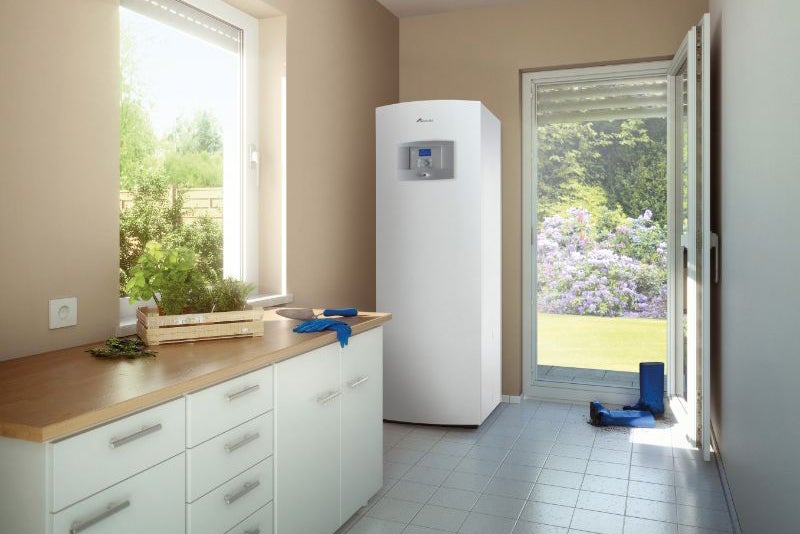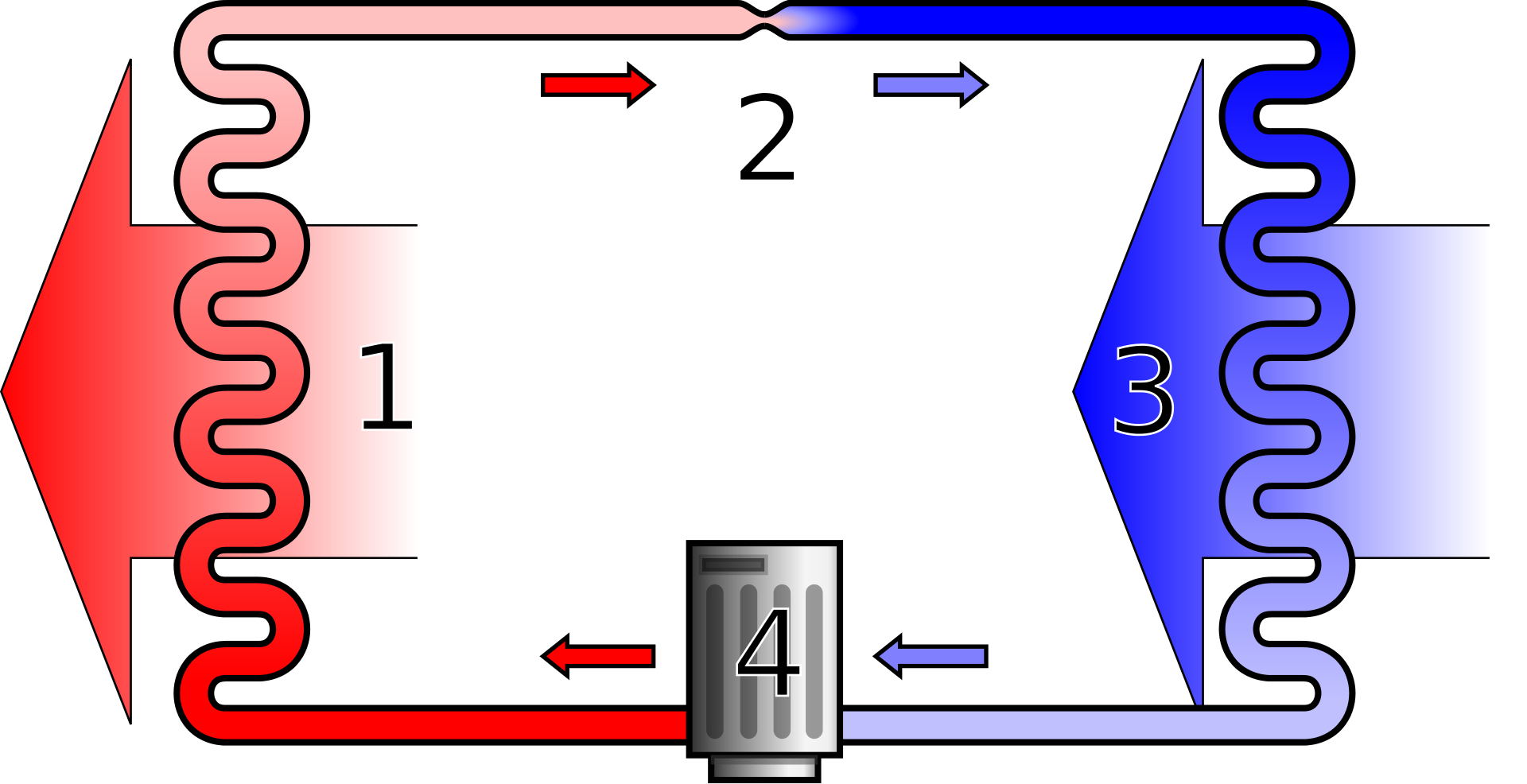What is a heat pump and should you get one?

With the UK committed to ‘net zero’ emissions by 2050, and domestic heating contributing around 14% of our current output, there’s an increasing urgency to find alternatives to gas boilers. In recent years, heat pumps have emerged as a strong low-carbon alternative, and now there’s growing support for them, with Honeywell Evohome recently adding support So, what is a heat pump and should you get one? Here we help you choose, including looking at heat pump cost and running costs.
How a heat pump works
Almost every home in the UK already has a heat pump. The technology has been around for more than 150 years, and works away quietly in every fridge or freezer to keep the inside cold. You’ve probably noticed that the back of the fridge gets warm, however. The system is ‘pumping’ heat from inside the cabinet, into the kitchen.
Heat pump installations exploit exactly the same technology to heat a home. There are two main types. With an air-source heat pump (ASHP), the system extracts heat from the air outside, and releases it into the heating or hot water system in the home. A ground-source heat pump (GSHP) works in the same way, but takes heat from the ground or groundwater, using a network of buried pipes.
Heat pumps work by pumping a refrigerant around a network of pipes. The cold fluid passes through the ‘warm’ zone (outside or underground) and takes on heat, evaporating into a gas. It’s then pumped through a compressor, which raises the pressure and temperature of the gas even more. This warm gas now travels into the ‘cold’ zone where it’s allowed to condense back into a liquid, releasing lots of heat energy into the heating system.

From Wikipedia, how a heatpump works using the condenser (1), expansion valve (2), evaporator (3) and compressor (4)
Why is a heat pump so efficient?
A conventional heater converts electrical or chemical energy into heat energy. Modern gas boilers are more than 90% efficient at this, so for every kilowatt hour (kWh) of energy in the gas they burn, more than 0.9kWh will end up heating your home, and they get more efficient if they are set at the right temperature to condense. Electric heaters are 100% efficient – a bar fire turns 1kWh of electricity into 1kWh of heat.
That sounds pretty impressive, but a well-designed heat-pump installation can have an efficiency of around 350%! The reason is that a heat pump doesn’t generate heat energy, it pumps existing heat from one place to another. A heat pump consuming 1kW of electrical energy could be pumping 3.5kW of heat energy into your home from outside.
This performance makes heat pumps radically cheaper to run than conventional electric heating systems. And, unlike a gas boiler, you can power them with renewable energy, making them a carbon-neutral technology.
Related: Best smart thermostat
What’s the downside to a heat pump?
Unfortunately, heat pumps do have some downsides when compared to conventional heating systems. While they can be very effective, they’re most efficient when heating to lower temperatures than a gas boiler – up to around 40℃, rather than 55℃ or more. Because of this, they’re best used in homes with good insulation and large heating surfaces, such as an underfloor system.
While GSHPs work well year-round, ASHPs are sensitive to the outside air temperature. They will work in cold and freezing conditions, but they have to work harder, making them less efficient at the peak of winter.
All heat pumps are slower to heat than conventional systems – you can’t turn one on and expect a hot bath 30 minutes later. Moreover, because they heat water to a lower temperature, heat-pump homes generally need a bigger tank to store more hot water.
You can get around the major limitations of heat pumps by installing them in a hybrid system, using the heat pump for baseload heating, and a conventional boiler to deliver extra heat quickly if needed. However, new homes designed for heat pumps will be optimised to get the best from them without a boiler, thanks to stricter insulation and draft-proofing standards.
How much does a heat pump cost?
A typical ASHP installation costs around £5,000-8,000 – far more than the £2,000-3,000 you’d pay for conventional gas-fired heating. GSHPs are even more expensive, ranging from about £10,000 upwards. However, both systems qualify for the government’s Green Homes Grant, which will contribute up to £5,000 toward installation. They also come under the Renewable Heat Incentive (RHI), which pays homeowners for heat they generate with renewable energy. The payments continue quarterly for seven years after installation. There’s a growing range of heat pumps available, including from traditional boiler manufacturers, such as Worcester Bosch.
These grants can help to offset heat pumps’ high installation costs, but even without them a heat pump might prove cheaper than conventional heating over time. Calculated using energy prices from the Energy Saving Trust, it costs about 4.6p per kWh to heat with gas, and 9p per kWh to heat with electricity (using an Economy 7 tariff). Using a heat pump with standard-rate electricity could cost around 4.7p per kWh.
That makes heat pumps roughly as cheap to run as gas heating, but using them with Economy 7 could make them cheaper. And if you’ve got solar panels, your running costs could be tiny.
The UK government has conducted the Future Homes Standard consultation on energy-saving measures in new housing. Among the changes proposed is a ban on gas boilers in new homes from 2025 onwards. Though it’s not yet the government’s policy, it’s inevitable that boilers, as we know them, will be phased out over the next couple of decades. As one of the leading practical alternatives, heat pumps will become far more common, as we upgrade to the next generation of heating and insulation to meet our future environmental goals.
They’re not the only choice, and other technologies are being investigated, such as hydrogen-powered boilers, where the waste gas is water.


